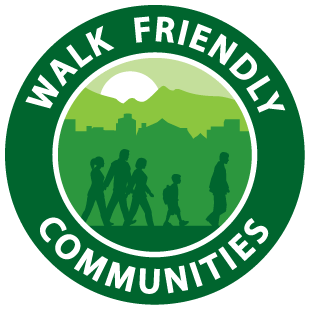To be truly Walk Friendly, a community must address and prioritize pedestrian needs in all program areas, from developing plans and building sidewalks to establishing and monitoring performance measures and evaluating projects. Communities should build programs that incorporate all of these strategies to comprehensively address walking and pedestrian safety.
Community Data and Evaluation
A community’s ability to track and measure travel behavior, safety, the condition of its infrastructure and the impact of its projects is critical for developing performance-based programs. Only having these tools at its disposal—and the staff support to do the leg-work —will enable a community to understand its strengths and weaknesses.
Planning and Policy
Plans and policies serve as the framework for developing safe, comfortable and connected pedestrian networks. With comprehensive plans and policies, a community can be proactive (rather than reactive) in addressing issues of pedestrian accessibility, safety, and comfort.
Engineering and Design
Designing, engineering, operating, and maintaining quality roadways and pedestrian facilities are all critical elements of becoming a Walk Friendly Community. Designers and engineers have a wide range of design solutions and technologies at their disposal that provide a safer, inviting, and more accessible street for people walking.
Education and Encouragement
Education and encouragement are essential components of a well-rounded pedestrian program. These initiatives inform, inspire, motivate, or reward people for using active transportation.
Law Enforcement
Communities that have created comfortable walking environments through engineering improvements or urban design features may still have safety concerns if traffic laws are not properly understood or adequately enforced. Enforcement works best when implemented in conjunction with education and awareness activities, with an approach that acknowledges and prioritizes equity.
